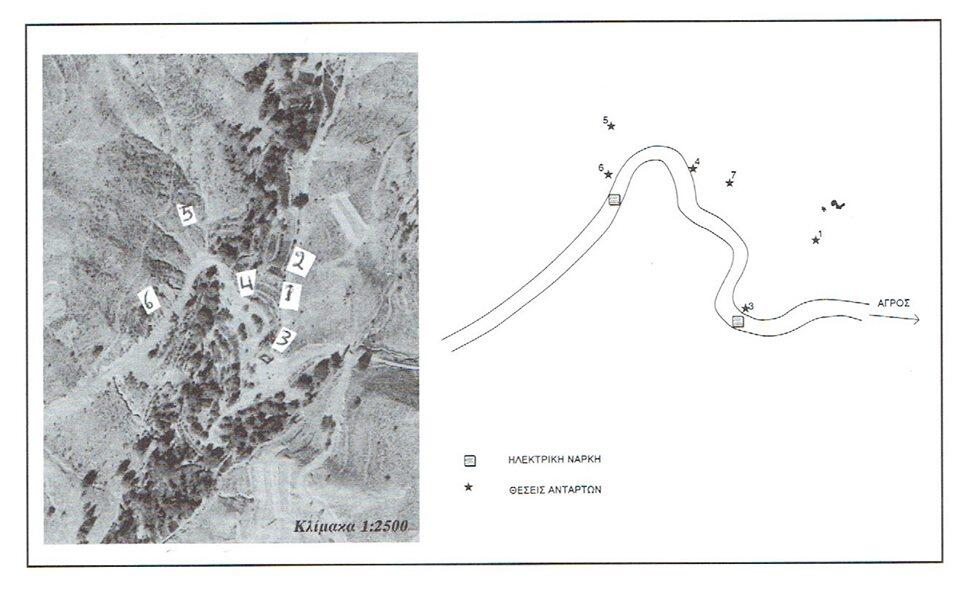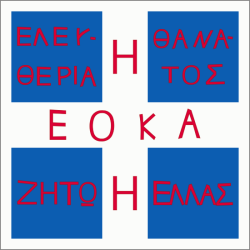Battle of Pefkos
Battle of Pefkos
Battle of Pefkos

The anniversary of April 1st reminds us of acts of bravery and heroism, of those hanged, those killed and those arrested. But the struggle of EOKA is not unreal. It is a chain of events, of everyday actions by spirited people, women, men and children, each of which has its own significance.
One event in this chain is the first major battle of EOKA, in November 1955, the “battle of Pefkos”. As early as November 19, 1955, Grivas had ordered, from Kyperounta where he was located, an intensification of EOKA action under the code name “Exormesis pros tin nikien”. He himself wanted to initiate the new phase of the armed struggle with an ambush in the area.
When the evening of November 22nd fell, the group, around 25 people, volunteer guerrillas and wanted persons, set off for the ambush site, on the Kyperounta-Chandria road. The site had been identified and selected in advance by the Pitsilia sector commander, Renos Kyriakides. The criteria were to provide cover for the fighters, good visibility of the road and the bends in the road that would force vehicles to reduce speed. Also, from that point began the path leading to the caves of Spilia where the guerrillas would take refuge after the ambush.
The purpose of the evening passage to the area was for Grivas to make sure that the men's positions were adequate, safe and that they ensured the best result. Digenis also wanted to establish that the established action plan was effective. The fighters were positioned according to the weapon each one was holding. Grivas passed by the rebel positions and instructed them, if he deemed it appropriate, to move them, improve them or reinforce them. After a short time, the order was given to return to Kyperounta.
At dawn on November 23, the EOKA men, along with the leader of the organization, returned to the ambush site and took up their positions. A person was sent to the opposite mountain as an observer. Grivas gave the final instructions.
Suddenly, around 15:00 they saw the observer's red scarf waving twice. It meant that two vehicles were approaching from Troodos. The fighters clutched the bombs and weapons in their hands. Their senses were alert. After a few minutes they heard the engines of vehicles approaching. One was a light armored vehicle with a turret on which was a machine gun and the other a light Champ type vehicle.
The first vehicle with the unsuspecting British was now near the electric mine at the entrance to the ambush area. The explosion did not occur. When the vehicle was near the grenade launchers, it was attacked by them and at the same time began to receive fire from the ambushers. The fighters' machine guns and rifles were hitting the enemy. The grenades were raining down. One vehicle, Champ, received the bulk of the fire and fell into the ravine. The driver of the other, the lightly armored one, sped up in fear. He was heading towards the second electric mine, at the exit of the ambush cordon. The second mine did not explode either. The vehicle sped up and escaped. The fighters continued to hit the immobilized Champ.
Suddenly, those near the vehicle saw two British men exiting it and attempting to escape. Charilaos Xenophontos abruptly shouted to them: “Hands up” and offered his weapon. They were surprised and raised their hands. However, there were no bullets in Charilaos Xenophontos’ weapon. They were exhausted from the battle. He shouted to another of his comrades to give him his weapon. In the seconds that passed, the soldiers started running and escaped.
When Digenis realized that it was safe for the participants to leave their positions, he fired the signal flare to end the battle. They gathered and started walking on the path that led to the caves. As Charalambos Batarias testifies, they were all very proud and satisfied. They felt that they were doing their duty to the Fatherland and that they were a continuation of the klepturia of 1821. They were determined. To die or to be freed.
The baptism of fire
Grivas, summarizing the battle, wrote: "It was the first well-organized operation of a guerrilla group." In addition, Kyriakos Kokkinos had stated characteristically about the fighters' cheerfulness: "It takes great courage to undertake such risky actions without having elementary knowledge of war." The significance of the battle is threefold. Initially, a relatively large number of people received their baptism of fire in it. Until then, the members of EOKA had received training mostly at a theoretical level, both in guerrilla warfare tactics and in the use of weapons and explosives. This particular battle was the first opportunity to put into practice what they had learned theoretically. The second significance of the battle was the involvement of Grivas himself. His presence, according to the testimonies of those involved, gave them courage and created a feeling of security, trust and self-confidence. The third significance is that the ambush took place in broad daylight, thus making the British feel insecure, even during the day. EOKA was now lurking at all hours, everywhere.
One dead, two injured and retaliation
The English, announcing the results of the ambush, spoke of one dead soldier and two wounded, an officer and a private.
The driver of the Champ vehicle, 25-year-old Engineer Private Robert Peter Melson of the 37th Engineer Battalion, was killed. Survivors who managed to escape with injuries were Second Lieutenant Martin Musson and Pioneer Sawyer.
When the tank reached the British camp in Agros, it reported the attack. Thus, a large number of commandos of the 3rd Commando Brigade moved towards the ambush area. The next day, at 6:00, the British commandos in retaliation killed 55-year-old Avgoustis Savvas Vorokliniotis, who was passing through the area unsuspectingly.
The official excuse was that he was ordered to stop and disobeyed. During the recovery of the dead pioneer and the vehicle from the cliff, bullets that had become unfired were found. The report is confirmed by the testimony of Savvas Koullapis, who recounts that several of his bullets had become unfired.
*Specialist scientist, Department of History and Archaeology, University of Cyprus.
Source: https://www.philenews.com
